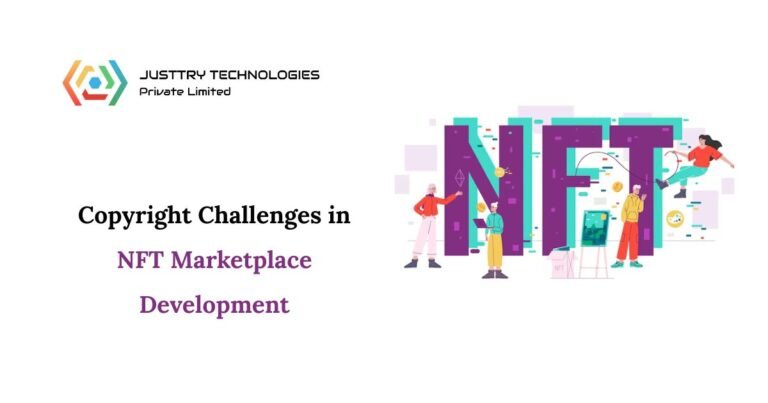The cryptocurrency ecosystem is one of the most dynamic and rapidly evolving sectors in global finance. From decentralized finance (DeFi) protocols and non-fungible tokens (NFTs) to decentralized autonomous organizations (DAOs) and tokenized assets, blockchain technology continues to reshape the way value is created, exchanged, and secured.
At the heart of these innovations are smart contracts, self-executing programs that run on blockchain networks to automate transactions, enforce rules, and maintain trustless operations. However, the speed at which the crypto market evolves also introduces heightened security risks. Hackers continuously develop new attack vectors, and vulnerabilities in smart contracts can result in catastrophic financial losses and reputational damage.
To address these challenges, AI-driven smart contract auditing has emerged as a cutting-edge solution that leverages artificial intelligence, machine learning, and automation to improve the long-term security of blockchain projects. This blog explores how AI-driven audits enhance security, their advantages over traditional methods, and how projects can integrate these solutions to thrive in a rapidly evolving crypto landscape.
Understanding AI-Driven Smart Contract Auditing
AI-driven smart contract auditing refers to the use of artificial intelligence and machine learning algorithms to automatically analyze, monitor, and verify the security and functionality of smart contracts. Unlike traditional audits, which rely primarily on human review, AI systems can continuously scan code for vulnerabilities, detect anomalies in transaction behavior, and predict potential exploit vectors.
Key components of AI-driven auditing include:
-
Automated Code Analysis: Machine learning algorithms detect vulnerabilities such as reentrancy attacks, integer overflows, and access control flaws.
-
Anomaly Detection: AI monitors real-time transactions and contract behavior to identify unusual activity that may indicate security risks.
-
Predictive Risk Assessment: By analyzing historical attack patterns and market behavior, AI models can predict potential vulnerabilities and recommend preventive measures.
-
Continuous Monitoring: AI systems operate 24/7, providing ongoing oversight even after smart contract deployment.
By combining automation, predictive analytics, and continuous monitoring, AI-driven auditing enhances both the efficiency and effectiveness of security measures in crypto markets.
Why Long-Term Security is Critical in Crypto Markets
The rapidly evolving nature of crypto markets presents unique security challenges that require proactive and continuous oversight.
-
High Market Volatility
Price swings and unpredictable market dynamics create strong incentives for hackers to exploit vulnerabilities for short-term gains. High volatility increases the urgency for projects to implement continuous monitoring and proactive security measures. Without robust safeguards, even minor flaws can be exploited rapidly, resulting in significant financial and reputational damage. Continuous vigilance becomes essential to maintain user trust in a highly competitive and fast-moving environment.
-
Complex Ecosystems
DeFi protocols often consist of multiple interconnected smart contracts, cross-chain bridges, and third-party integrations. Each interaction introduces potential attack vectors that traditional audits may not fully capture. In such complex environments, a single overlooked vulnerability can cascade into a systemic risk affecting entire protocols. Ensuring end-to-end security requires not just reviewing individual contracts but evaluating the interactions and dependencies across the ecosystem.
-
Rapid Protocol Updates
Crypto projects frequently update their contracts, implement new features, or adjust tokenomics to respond to market demands. Continuous security evaluation ensures that these updates do not inadvertently introduce new vulnerabilities. Regular oversight is essential to maintain integrity across evolving systems. AI-driven solutions can monitor these changes in real time, flagging high-risk updates before they are exploited.
-
Sophisticated Attack Techniques
Hackers constantly innovate, employing strategies such as flash loan attacks, sandwich attacks, and front-running exploits. AI-driven audit systems can analyze emerging attack patterns, detect unusual behavior, and predict vulnerabilities, providing a proactive layer of defense that traditional auditing alone cannot achieve. By leveraging historical attack data and predictive analytics, projects can anticipate potential threats and take corrective action before damage occurs.
By integrating AI-driven smart contract audits, projects can address these challenges head-on, improving resilience, safeguarding investor trust, and ensuring long-term security in a highly dynamic crypto market.
Advantages of AI-Driven Smart Contract Auditing
-
Speed and Efficiency
Traditional audits can take weeks or even months, delaying deployment and increasing costs. AI-driven systems can analyze large volumes of code rapidly and accurately, identifying potential vulnerabilities in a fraction of the time. This accelerated process enables faster product launches without compromising security. Additionally, automated analysis reduces the risk of oversight in large and complex contracts.
-
Continuous Monitoring
Unlike static, one-time audits, AI-driven solutions provide 24/7 oversight of deployed contracts. Real-time monitoring ensures that vulnerabilities or anomalous activity are detected immediately, minimizing exposure to potential attacks and maintaining the integrity of ongoing operations. Continuous monitoring also allows teams to track performance metrics and audit logs, enhancing transparency and accountability.
-
Predictive Risk Assessment
Machine learning algorithms can predict potential exploits based on historical attack data, market behavior, and emerging threat patterns. This proactive approach allows teams to address vulnerabilities before they are exploited, reducing financial loss and reputational risk while enhancing overall system resilience. Over time, predictive models become smarter, adapting to new attack techniques and evolving ecosystem dynamics.
-
Scalability
As blockchain projects grow in complexity, AI-driven auditing scales seamlessly to monitor multiple contracts, cross-chain interactions, and high-volume transaction environments. This ensures comprehensive coverage without the need to proportionally increase human auditing resources. Projects can expand confidently, knowing that security scales alongside their operational growth.
-
Cost-Effectiveness
While integrating AI requires an initial investment, it reduces long-term costs by automating repetitive tasks, minimizing repeated manual audits, and preventing expensive security breaches. Projects can allocate resources more efficiently while maintaining high security standards. Over time, AI auditing becomes a sustainable solution that balances cost with robust protection.
-
Enhanced Accuracy
AI algorithms detect subtle vulnerabilities that human auditors may overlook, combining static analysis, dynamic testing, and pattern recognition for comprehensive coverage. This depth of analysis ensures that both obvious and hidden risks are identified and addressed, creating a more robust and secure ecosystem. With AI, projects gain confidence that their contracts are resilient against both conventional and sophisticated attacks.
How AI-Driven Auditing Works in Practice
-
Pre-Deployment Code Analysis
Before a smart contract goes live, AI-driven auditing tools perform a comprehensive review of the code. These systems identify logic flaws that could be exploited, security gaps such as improper access controls, and inefficiencies that might cause failures under high transaction volumes. By simulating multiple transaction scenarios and analyzing interactions across interconnected contracts, AI ensures that the contract is both secure and optimized prior to deployment. This proactive step reduces the likelihood of vulnerabilities being exploited immediately after launch.
-
Real-Time Transaction Monitoring
Once deployed, AI continuously observes all contract interactions in real time. It tracks transaction volumes and patterns, flags unusual behaviors or sudden spikes in activity, and detects unauthorized attempts to execute privileged functions. Automated alerts notify the development team instantly, enabling rapid responses to potential threats. This continuous monitoring is particularly valuable in fast-moving DeFi ecosystems, where even brief exploits can result in significant financial losses.
-
Predictive Vulnerability Modeling
AI algorithms leverage historical exploit data, current market trends, and transaction patterns to predict potential vulnerabilities before they are exploited. By identifying high-risk functions or patterns early, teams can proactively reinforce security measures, reducing the chances of both known and emerging threats affecting the protocol. This predictive approach gives projects a forward-looking advantage over conventional auditing methods.
-
Post-Deployment Updates and Adaptive Learning
AI systems continuously learn from new threats, attempted exploits, and changing market conditions. This adaptive capability ensures that detection algorithms evolve alongside the crypto ecosystem, improving accuracy over time. By integrating post-deployment feedback, AI-driven audits create a dynamic security infrastructure that strengthens with experience, helping projects maintain resilience in an ever-changing environment.
Integrating AI-Driven Auditing for Long-Term Security
-
Adopt Hybrid Security Models
Combining AI-driven auditing with manual audits and third-party reviews provides comprehensive protection. While AI excels at continuous monitoring and predictive analysis, human auditors validate complex logic, assess contextual nuances, and handle scenarios that require judgment and experience. This hybrid approach ensures no vulnerabilities are overlooked, blending speed, accuracy, and human expertise.
-
Implement Smart Contract Upgrade Mechanisms
Projects should leverage upgradeable or proxy contracts, allowing secure patches and improvements without redeploying the entire system. AI-driven audits can immediately verify updates post-deployment, ensuring that changes do not introduce new risks or compromise existing functionality.
-
Incorporate Anomaly Detection Dashboards
Dashboards enable teams to visualize contract activity, monitor AI-generated alerts, and track potential vulnerabilities in real time. By combining AI insights with human oversight, these interfaces empower informed decision-making, ensuring that critical security issues are prioritized and addressed efficiently.
-
Establish a Bug Bounty Program
AI-driven auditing complements community-driven bug bounty programs by prioritizing findings, reducing false positives, and streamlining human participation. Ethical hackers can focus on high-risk vulnerabilities, while AI handles large-scale monitoring and preliminary analysis, increasing overall program efficiency and security coverage.
-
Continuous Learning and Model Updates
AI algorithms require regular updates with the latest attack patterns, market conditions, and blockchain ecosystem data. Continuous learning ensures that predictive models remain accurate, allowing projects to anticipate new exploits and strengthen defenses proactively. This iterative improvement process makes AI-driven auditing a resilient, forward-looking solution for long-term security.
Case Studies: AI-Driven Auditing in Action
Case Study 1: CertiK AI Audit
CertiK leverages AI and formal verification to provide continuous security for blockchain projects. Their AI systems monitor live contracts, detect anomalies, and predict vulnerabilities, helping projects prevent attacks and gain investor confidence.
Case Study 2: OpenZeppelin Defender
OpenZeppelin’s AI-powered monitoring platform integrates automated alerts, anomaly detection, and smart contract governance features. Several DeFi projects have successfully used Defender to monitor live deployments, reducing exploit risks.
Case Study 3: Forta Network
Forta provides real-time monitoring and threat detection across multiple blockchain networks. Using AI algorithms, the platform identifies malicious behavior and triggers alerts before significant damage occurs.
These examples demonstrate the effectiveness of AI-driven auditing in providing proactive, continuous security for rapidly evolving crypto markets.
Benefits for Investors and Users
-
Enhanced Trust: Investors are more likely to fund projects with AI-driven continuous auditing due to reduced risk exposure.
-
Higher Adoption Rates: Users engage with platforms that prioritize security, increasing liquidity, network activity, and long-term viability.
-
Reduced Losses: Continuous monitoring prevents hacks, exploits, and operational failures, protecting both users and investors.
-
Transparency: AI-driven insights provide clear reporting, reassuring stakeholders of the project’s commitment to security.
Challenges and Considerations
1. Complexity of AI Integration
Integrating AI auditing requires technical expertise and infrastructure. Startups must ensure proper implementation to avoid false positives or missed vulnerabilities.
2. Evolving Threat Landscape
Hackers constantly develop new attack methods. AI models must be continuously updated to remain effective, requiring dedicated resources.
3. Cost of AI Solutions
High-quality AI auditing platforms may require significant investment. Projects should weigh costs against potential losses from security breaches.
4. Regulatory Compliance
AI-driven security systems must align with local regulations, particularly for projects involving financial products or tokenized assets.
Best Practices for AI-Driven Smart Contract Security
-
Combine AI with Manual Audits: Hybrid approaches ensure maximum coverage and accuracy.
-
Deploy Upgradeable Contracts: Allow safe patching without disrupting users.
-
Monitor Transactions in Real-Time: Detect anomalies early to prevent exploits.
-
Integrate Predictive Analytics: Anticipate vulnerabilities based on historical and market data.
-
Engage the Community: Complement AI audits with bug bounties for additional security coverage.
Conclusion
AI-driven smart contract auditing is revolutionizing the way blockchain projects secure their protocols in rapidly evolving crypto markets. By combining automation, predictive analytics, anomaly detection, and continuous monitoring, AI enables projects to proactively identify vulnerabilities, reduce risks, and maintain long-term security. For investors and users, AI-driven audits provide enhanced trust, transparency, and confidence in project integrity. For startups and established projects alike, integrating AI-powered auditing ensures resilience against emerging threats, operational reliability, and regulatory compliance. In an environment where market dynamics change rapidly and attack vectors evolve constantly, AI-driven smart contract auditing is not merely an optional security measure—it is a strategic imperative for long-term success, adoption, and credibility in the decentralized economy.





